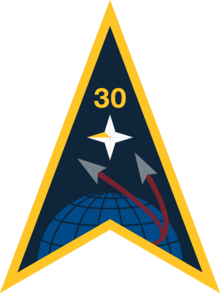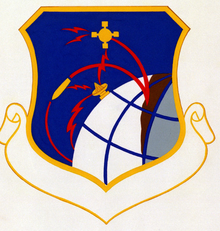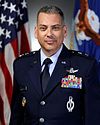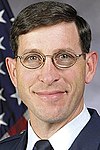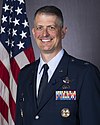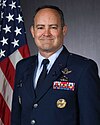
Vandenberg Space Force Base, previously Vandenberg Air Force Base, is a United States Space Force Base in Santa Barbara County, California. Established in 1941, Vandenberg Space Force Base is a space launch base, launching spacecraft from the Western Range, and also performs missile testing. The United States Space Force's Space Launch Delta 30 serves as the host delta for the base. In addition to its military space launch mission, Vandenberg Space Force Base also hosts space launches for civil and commercial space entities, such as NASA and SpaceX.
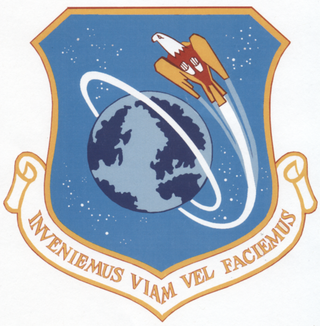
The United States Air Force's Air Force Satellite Control Facility (AFSCF) was a space command and control unit located at Onizuka AFS, California. It has the distinction of being heavily involved in the world's first reconnaissance satellite program, CORONA. Due to geological hazards, and the terrorism threat from its proximity to a major transportation link, the facility's command and control functions were moved to Schriever AFB, Colorado.

The Western Range (WR) is the space launch range that supports the major launch head at Vandenberg Space Force Base. Managed by the Space Launch Delta 30, the WR extends from the West Coast of the United States to 90° East longitude in the Indian Ocean where it meets the Eastern Range Operations involve military, government, and commercial interests. The WR has been operated by civilian contractors since its establishment, following the precedent of the Eastern Range. On 1 October 2003, InDyne Inc. took over the range contract from ITT Industries which had operated the range for the previous 44 years.

The 595th Command and Control Group is an active unit of the United States Air Force. It is organized under Air Force Global Strike Command (AFGSC), and its operations are centered at Offutt Air Force Base, Nebraska. It was activated in a ceremony held on 6 October 2016.
The 30th Mission Support Group was a support group of the United States Air Force, and later United States Space Force, part of the 30th Space Wing at Vandenberg Air Force Base, California. The group's predecessor, the 4392nd Aerospace Support Group and Wing, was the principal base operating unit for Vandeberg AFB from 1961 onwards. The unit was inactivated on 14 May 2021.

Space Systems Command (SSC) is the United States Space Force's space development, acquisition, launch, and logistics field command. It is headquartered at Los Angeles Air Force Base, California and manages the United States' space launch ranges.

The Space Launch Delta 45 is a unit of the United States Space Force. The Space Launch Delta 45 is assigned to Space Systems Command and headquartered at Patrick Space Force Base, Florida. The wing also controls Cape Canaveral Space Force Station. The 45th Space Delta is responsible for all space launch operations from the East Coast. It manages the Eastern Range, including launch activities for the Space Force, Department of Defense (DoD), NASA, and other private space corporations.

The 2nd Space Warning Squadron Is part of the Space Delta 4 at Buckley Space Force Base, Colorado. It operates the Space-Based Infrared System satellites conducting global monitoring for significant infrared events.

The 30th Operations Group was a group of the United States Space Force. It was assigned to the 30th Space Wing, stationed at Vandenberg Air Force Base, California. It was responsible for all space launch operations from the West Coast of the United States, including all polar launches. It operated the Western Range, which conducts launches for the Space Force, other parts of the Department of Defense, NASA, and private space corporations. In 2021 the 30th Operations Group and the 30th Mission Support Group were inactivated and squadrons assigned to Space Launch Delta 30.

Space Operations Command (SpOC) is the United States Space Force's space operations, cyber operations, and intelligence field command. It is headquartered at Peterson Space Force Base, Colorado and serves as the U.S. Space Force's service component to United States Space Command. Space Operations Command consists of Space Operations Command West, its mission deltas, and garrison commands.
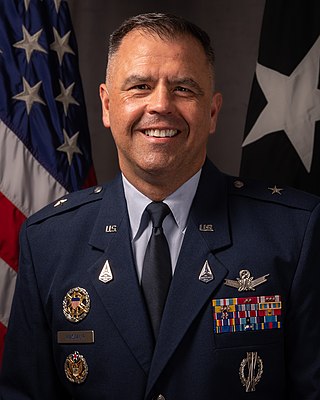
Anthony Joseph Mastalir is a United States Space Force brigadier general who has served as the commander of the United States Space Forces Indo-Pacific since 2022. He previously served as commander of Space Launch Delta 30 from 2019 to 2021.

Space Training and Readiness Command is the United States Space Force's education, training, doctrine, and test field command. It is headquartered at Peterson Space Force Base, Colorado.

Space Delta 2 is the United States Space Force's space domain awareness delta and is headquartered at Peterson Space Force Base, Colorado. Space Delta 2 tracks and monitors all manmade objects from low Earth orbit to geosynchronous orbit and further out to deep space. It also partners with the National Oceanic and Atmospheric Administration to provide weather satellite observation for the U.S. Armed Forces. It consists of the 18th Space Control Squadron, 20th Space Control Squadron, and 21st Operations Support Squadron.

Space Delta 3 is a United States Space Force unit responsible for presenting operational combat-ready space electromagnetic warfare forces in support of assigned missions. It is headquartered at Peterson Space Force Base.

Space Base Delta 2 is a garrison delta in the United States Space Force. It is responsible for providing installation support functions for the resident air operations, space-based missile warning capabilities, space surveillance operations, and space communications missions at Buckley Space Force Base, Cape Cod Space Force Station, Cavalier Space Force Station, and Clear Space Force Station. It also provides airmen and guardians that deploy and are deployed in-place, to accomplish warfighting missions globally.

The United States Space Force is organized by different units: the Space Staff, the field commands, and the space deltas.
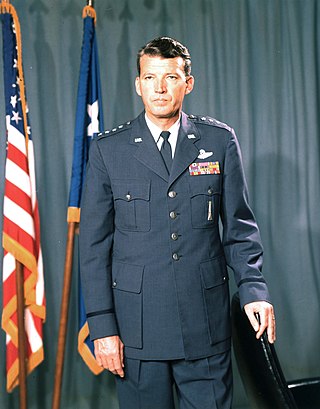
While the United States Space Force gained its independence on 20 December 2019, the history of the United States Space Force can be traced back to the beginnings of the military space program following the conclusion of the Second World War in 1945. Early military space development was begun within the United States Army Air Forces by General Henry H. Arnold, who identified space as a crucial military arena decades before the first spaceflight. Gaining its independence from the Army on 18 September 1947, the United States Air Force began development of military space and ballistic missile programs, while also competing with the United States Army and United States Navy for the space mission.

Space Delta 1 is a United States Space Force unit responsible for space training. It runs the Space Force's basic military training, weapons school, and other advanced training courses and exercises. It was established on 23 August 2021 following the establishment of the Space Training and Readiness Command, the field command to which it reports. It is headquartered at Vandenberg Space Force Base, California.

Space Delta 12 is a United States Space Force unit responsible for space test and evaluation. It tests space systems and capabilities in support of weapon system acquisition, operational acceptance, and readiness. It was established on 23 August 2021 following the establishment of the Space Training and Readiness Command, the field command to which it reports. It is temporarily headquartered at Schriever Space Force Base, Colorado, but its final location requires a base selection process.

The 30th Space Communications Squadron is a United States Space Force (USSF) unit. 30 SCS is assigned to Space Launch Delta 30 at Vandenberg Space Force Base, California, under the Space Systems Command (SSC) Field Command. 30 SCS is responsible for providing cyber, communications, and mobile optics support to Space Launch Delta 30 and Vandenberg Space Force Base tenant units.
